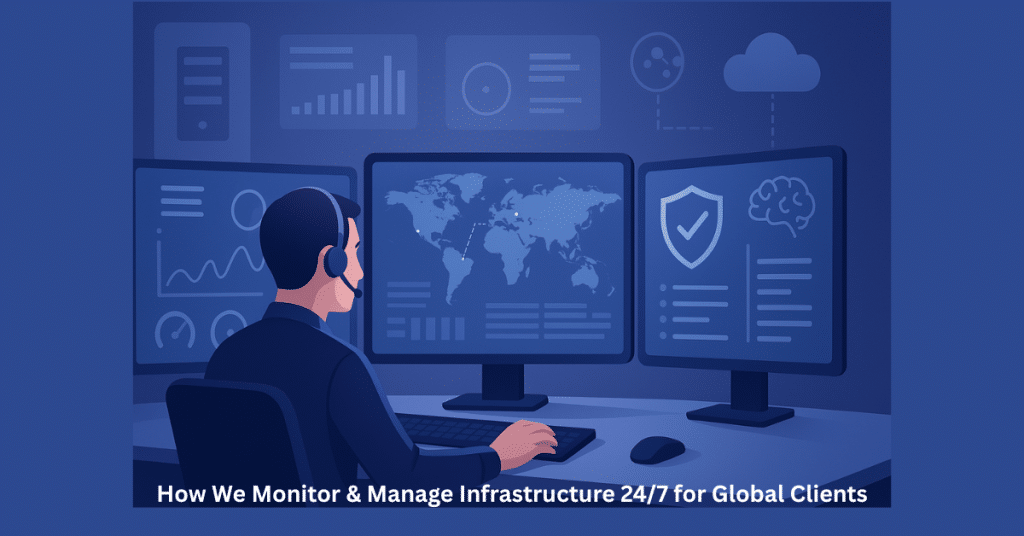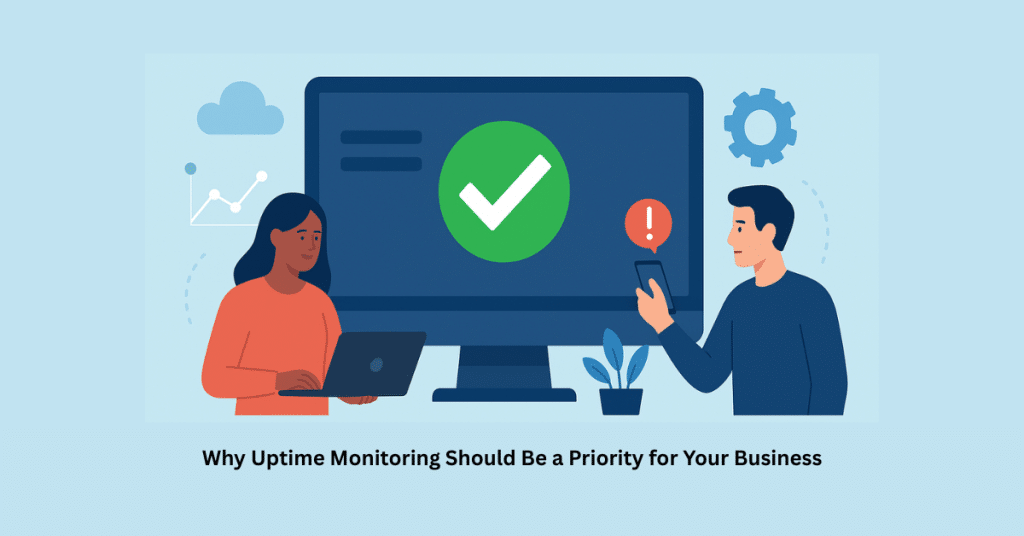In today’s digital-first world, system uptime and reliability are non-negotiable. Every second of downtime costs money, trust, and opportunity. That’s where DevOps comes in — bridging the gap between development and operations to ensure faster releases, fewer failures, and seamless recovery. This blog explores how DevOps helps reduce downtime and improve reliability, with practical insights and real-world relevance for businesses across the globe.
Introduction
Downtime is the silent killer of modern businesses. Whether you run an e-commerce site, a banking app, or a SaaS platform, even a few minutes of service unavailability can impact your reputation and bottom line. In a world where users expect 24×7 uptime, traditional siloed IT approaches no longer work.
That’s why many organizations are turning to DevOps — a cultural and technological shift that unites development, operations, and QA teams under a single goal: deliver reliable software faster and with fewer disruptions.
So, how does DevOps help reduce downtime and improve reliability in real-world systems? Let’s break it down.
What Is DevOps — And Why It Matters for Uptime
DevOps is not just a set of tools or a department — it’s a mindset. It encourages continuous collaboration between software developers (Dev) and IT operations (Ops).
Instead of working in isolation, both teams share responsibilities for building, testing, deploying, and maintaining applications. This approach minimizes communication gaps, automates repetitive tasks, and ensures faster response times when things go wrong.
The result? Improved reliability, reduced downtime, and a more resilient IT infrastructure.
1. Continuous Integration and Continuous Deployment (CI/CD) Reduce Human Error
One of the biggest causes of downtime is human error — often during code deployments or updates. DevOps introduces CI/CD pipelines that automate these processes.
How CI/CD Helps:
- Automation ensures that code changes are tested, integrated, and deployed without manual intervention.
- Rollback mechanisms allow quick recovery if something goes wrong.
- Consistent testing environments reduce the risk of production issues caused by mismatched configurations.
For instance, imagine pushing an update to a live payment gateway. With CI/CD, the code is tested automatically in multiple stages before going live — drastically lowering the risk of downtime due to a bad deployment.
2. Proactive Monitoring and Incident Response
In traditional setups, teams react after a failure occurs. In DevOps, proactive monitoring tools like Prometheus, Grafana, or Datadog continuously track system health, performance, and user experience.
Why This Improves Reliability:
- Early detection: Alerts are triggered before users are affected.
- Faster recovery: Automated scripts can restart failed services instantly.
- Data-driven insights: Teams can analyze trends to prevent future issues.
This proactive approach keeps systems running smoothly — reducing Mean Time to Detect (MTTD) and Mean Time to Recover (MTTR), which are key metrics for reliability.
3. Infrastructure as Code (IaC) Ensures Consistency and Quick Recovery
Manual server configurations can be slow and inconsistent. Infrastructure as Code (IaC) — another core concept of DevOps — changes that.
With tools like Terraform, Ansible, or Azure ARM Templates, teams can define and manage infrastructure using code.
Benefits of IaC:
- Faster recovery: Entire environments can be rebuilt in minutes after a crash.
- Consistency: The same configurations are applied across development, testing, and production.
- Scalability: Systems can automatically adjust to handle higher loads, reducing performance-related downtime.
If a data center fails, IaC allows you to spin up identical environments in another region within minutes — ensuring business continuity.
4. Automated Testing Improves Software Stability
Every software release carries some risk. But with DevOps, testing becomes a continuous part of development — not an afterthought.
Automated testing includes:
- Unit tests: Validate individual code components.
- Integration tests: Ensure different modules work together.
- Load and performance tests: Simulate high traffic conditions.
This automation means that bugs are caught before deployment, preventing issues that could bring systems down later. More testing equals fewer surprises — and that’s the essence of improving reliability.
5. Blue-Green and Canary Deployments Minimize Impact of Failures
DevOps embraces deployment strategies designed to reduce downtime during updates:
- Blue-Green Deployment: Two identical environments (blue and green) run simultaneously. The new version is deployed to one (green) while the other (blue) continues serving users. Once validated, traffic switches instantly — with zero downtime.
- Canary Deployment: New code is rolled out to a small subset of users first. If no issues arise, it’s gradually released to everyone.
These smart rollout methods ensure that even if a bug slips through, it only affects a fraction of users temporarily — not the entire system.
6. Culture of Collaboration Improves Accountability and Speed
At its core, DevOps is about people — not just tools. When developers and operations teams work together, issues are identified and resolved faster.
Cultural Benefits That Improve Reliability:
- Shared responsibility: Everyone owns uptime and quality.
- Transparency: Teams communicate openly about performance, failures, and goals.
- Continuous feedback: Post-incident reviews drive long-term improvement.
This collaborative mindset reduces finger-pointing and creates a resilient, learning-oriented culture that naturally leads to more reliable systems.
7. Scalability and Flexibility with Cloud-Native DevOps
Modern DevOps thrives in the cloud. With platforms like AWS, Azure, and Google Cloud, infrastructure can scale automatically based on demand — ensuring systems never become overloaded.
Cloud-Native Benefits for Reliability:
- Auto-scaling: Adds or removes servers automatically to handle traffic spikes.
- Load balancing: Distributes requests evenly to avoid bottlenecks.
- Multi-region deployment: Keeps services running even if one region fails.
By combining DevOps automation with cloud scalability, businesses can achieve near-zero downtime even under unpredictable workloads.
8. Security Integration (DevSecOps) Prevents Reliability Risks
Reliability isn’t just about uptime — it’s also about trust and security. A cyberattack can bring down systems faster than a coding error.
DevSecOps, an extension of DevOps, integrates security at every stage of development.
How DevSecOps Enhances Reliability:
- Automated vulnerability scans catch issues early.
- Compliance checks ensure security standards are met before deployment.
- Continuous patching keeps systems up to date without downtime.
When security and reliability go hand-in-hand, the result is a system that’s not only stable but also safe for users.
9. Continuous Feedback Loops Drive Continuous Improvement
DevOps thrives on data. Every deployment, incident, or user interaction generates insights that teams can use to improve future performance.
This continuous feedback loop ensures that reliability isn’t treated as a one-time goal but as an ongoing process.
Examples of Feedback Sources:
- Monitoring data: Detects performance issues.
- User analytics: Reveals patterns of downtime impact.
- Post-incident reviews: Identify root causes and preventive measures.
By constantly learning and refining, DevOps teams build systems that evolve to become more reliable over time.
10. Disaster Recovery Becomes Faster and Smarter
Even with the best planning, disasters happen — from data center failures to cyber incidents.
DevOps principles make disaster recovery (DR) efficient and automated.
- Automated backups: Reduce data loss.
- Version-controlled infrastructure: Enables rapid restoration.
- Cross-region replication: Keeps services available even if one zone goes down.
With a well-designed DevOps-based DR plan, downtime is measured in minutes instead of hours or days.
Real-World Example
Netflix is a great example of DevOps-driven reliability. The company uses automation, monitoring, and chaos engineering — intentionally breaking parts of its system to test resilience. This approach helps Netflix maintain near 100% uptime, even when millions of users stream simultaneously across the world.
Conclusion
In the digital economy, downtime is the enemy of growth. Customers expect instant access, and businesses can’t afford interruptions.
By adopting DevOps, organizations gain the tools, culture, and agility needed to ensure high availability and reliability. From automation and monitoring to collaboration and continuous learning — every aspect of DevOps contributes to building systems that don’t just work, but work consistently and confidently.
If your business struggles with frequent outages or slow recoveries, it’s time to embrace the DevOps approach. The result isn’t just better uptime — it’s better customer trust, smoother operations, and a stronger digital foundation for the future.



